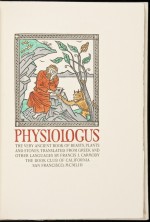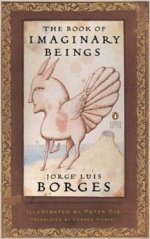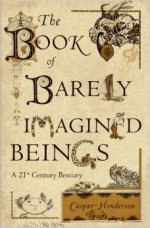Microbes live around us and within us and our interactions with them are a matter of life and death, yet in regard to such issues as biodiversity, public awareness centers very heavily on “charismatic megafauna.” By making information about various microbes available and accessible and by inviting imaginative response to that information, Microbestiary hopes to show in welcoming and memorable ways, that the bustling microbial world is populated by strange and beautiful characters that are themselves quite charismatic: bacterial cells that contain coiled harpoons that unfurl to 15 times the cell’s own length when their ciliate host is attacked; ciliate protozoans with seven sexes and 21 different sexual orientations; ocean-going cells that glow in the dark; and so on.
Though often overlooked by the public, it is not only the unique members of the microbial community that have an impressive effect on the world around us. By highlighting the interactions of microbes across landscapes of various forms, the Microbestiary hopes to enlighten viewers as to the complexity, variety, and intricate beauty of the ways the smallest members of our world are entangled with everything from the presence of waterlilies in a pond to the circadian rhythm of plant hosts.
We hope that Microbestiary will offer insight, understanding, knowledge, surprise, and pleasure. Enjoy the site!
Who We Are
The Microbestiary is made up of a small core team and a series of wonderful collaborators.

Erin Bentley took over as the Microbestiary Project Lead in 2020, having previously been the graduate student coordinator and outreach consultant. Erin’s experience in microbiology education outreach started in her undergraduate. She worked with the general microbiology teacher to use popular video games to teach microbiological concepts and received an NSF REU to develop a video game to teach disease spread and population persistence in a fragmented habitat. She began working with the Microbestiary in 2018, and has since expanded the Microbestiary from a web-based platform to include curricula development for formal and informal science education, transdisciplinary scholarship of teaching and learning research, and a collaborative network that spans the United States and abroad. Her most recent work with the Microbestiary has focused on the development and launch of the Microbestiary Artist Residency alongside collaborators at the University of Wyoming Art Museum. This two week intensive residency will teach three chosen artists about the complexities of microbiological life and microbial ecology, and will culminate in an exhibition at the University of Wyoming Art Museum in the fall of 2023. You can follow along with Erin at her website.
Submissions
Microbestiary welcomes new material for evaluation as website content. If you are interested in submitting, please follow the guidelines below.
Scientific information:
A scientific image, accompanied by a description, that depicts or represents a microorganism (bacterial, archaeal, viral, or protozoan), or its component structures. Acceptable description formats include text document, audio file, or video file. The text should be scientifically accurate, brief enough to be suitable for website use (approximately 200-500 words), and accessible to a lay audience (readers/viewers of all ages, with various levels of scientific background). The image must be accompanied by formal permission from the copyright holder to reproduce it on the Microbestiary site.
Submissions that feature the following are highly encouraged:
- Microbial distribution and diversity across landscapes
- Microbial community structure and function
- Cells exhibiting complex intracellular membranes
- Relationships between membrane structure and function
- Contributions of lipids to membrane structure and function
- Effects of environmental parameters on membrane structure and function
- Sterol biology
- Exceptions to the “rules” governing cell biology
Artistic response:
A digital copy of a work of art in any medium (poem, prose, visual art, musical composition choreography, video…), responding to scientific information represented in the Microbestiary. Modest honoraria are available for some selected artistic contributions.
Submission and evaluation process:
Please send submissions or inquiries to: info@microbestiary.org. Submitters of both scientific and artistic material will receive a decision on use of their submissions from the Microbestiary administrators. In the case of submissions considered potentially suitable for use on the site, we will initiate a conversation to discuss this further. Contributors of material accepted for the site will be asked for a brief note for the Contributor Profiles page.
Microbestiary is grateful for generous support from:
The Berry Biodiversity Conservation Center of the University of Wyoming
The Creative Writing MFA Program of the University of Wyoming
The Bestiary has a rich and varied history, and many contemporary exemplars. Here are just a few:
Anon. Physiologus. Trans. Francis J. Carmody. The Book Club of California, 1953.
In this volume, Carmody has “reconstructed” the oldest bestiary, originally a gathering of “some fifty legends of animals, plants and stones” by a Christian monk in Egypt or Palestine, in each of which the monk found “a mystic meaning.” The book includes illustrations by Mallette Dean.
Borges, Jorge Luis, with Margarita Guerrero. The Book of Imaginary Beings. Trans. Andrew Hurley. Penguin, 2006.
Borges and Guerrero describe themselves as having “compiled a volume of the strange creatures that man’s fantasy has engendered through time and space,” and emphasize its incompleteness, inviting readers to send them descriptions “of their own local monsters.” This particular edition is illustrated by Peter Sís.
Henderson, Caspar. The Book of Barely Imagined Beings: A 21st Century Bestiary. Univ. of Chicago Press, 2013.
Henderson, seeking to acknowledge that “for much of human history attempts to understand and define ourselves have been closely linked to how we see and represent other animals,” borrows traditional structures (such as alphabetical ordering of entries) from older bestiaries, but writes entries that incorporate up-to-date information about the various beasts (mostly creatures of the sea).



